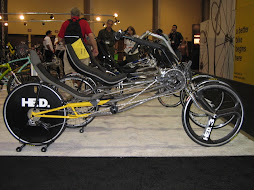Make the most of new transportation opportunities
After years of pushing all-for-the-auto policies, the government is now serious about supporting alternative ways of getting around
For decades, the federal government would fund 90 percent of an freeway project and much less—if anything at all—of a subway, light rail or commuter train line. That changed the face of America, as highways were slashed through the heart of vital communities, breaking their spirit and hastening the exodus of people to far-flung suburbs. In the same period, hardly any federal or state money went toward expanding trains and other alternatives to the automobile. From the end of World War II to the opening of the Bay Area’s BART transit system in 1972, only a few miles of subway lines were added nationally, compared to tens of thousands of miles of interstates and other highways. That gross imbalance may well have affected the growth and character of your neighborhood.



No comments:
Post a Comment